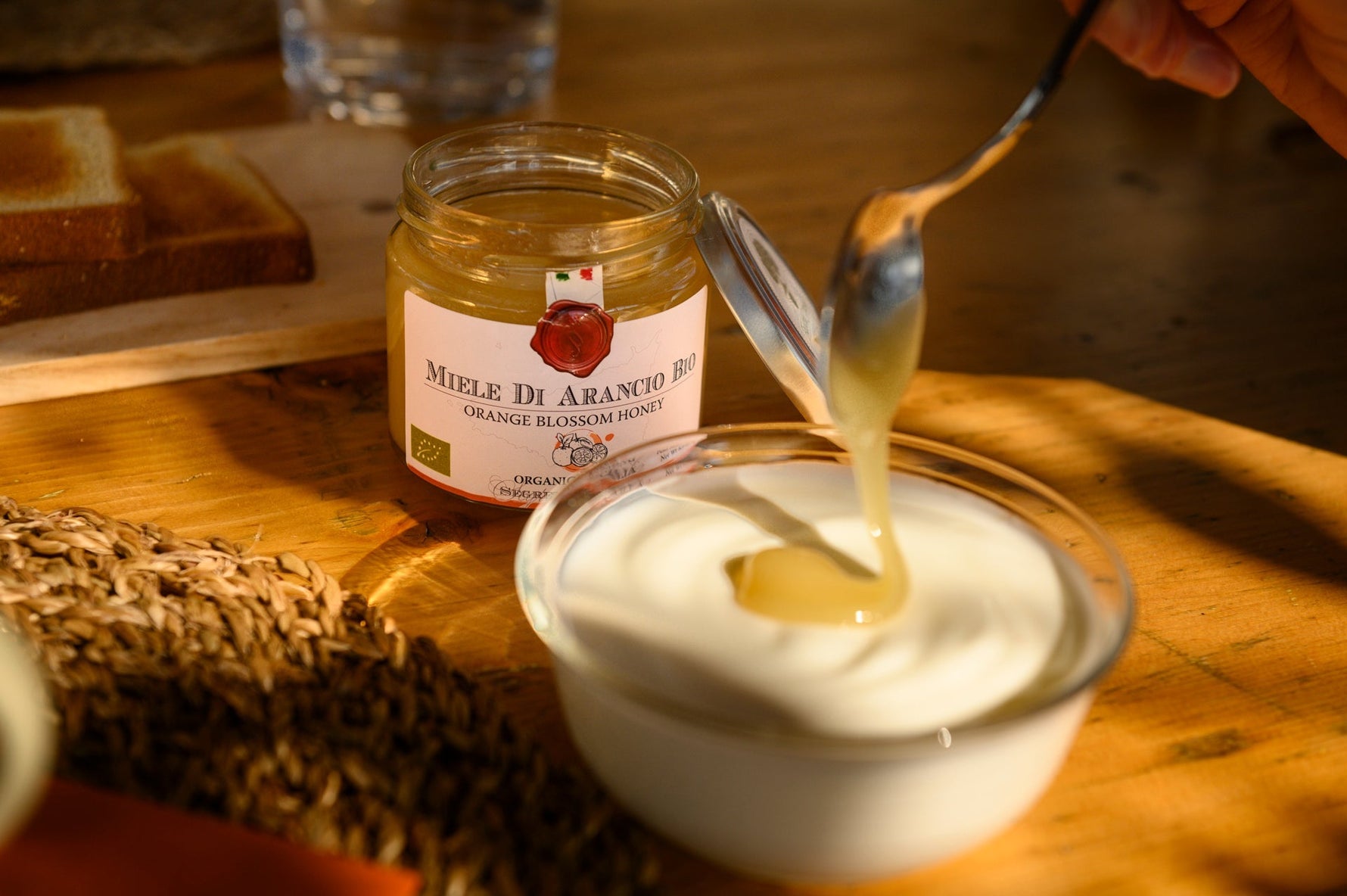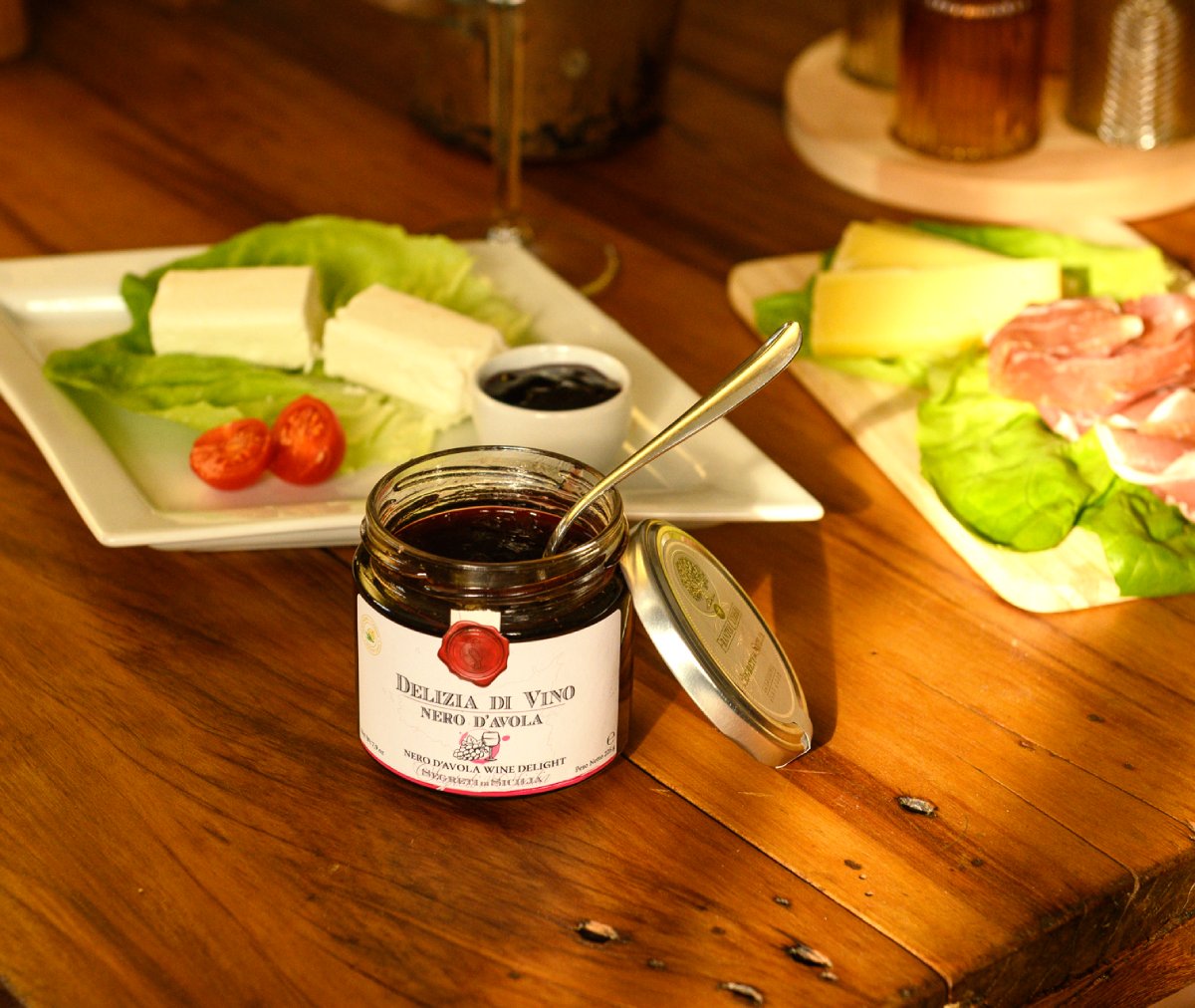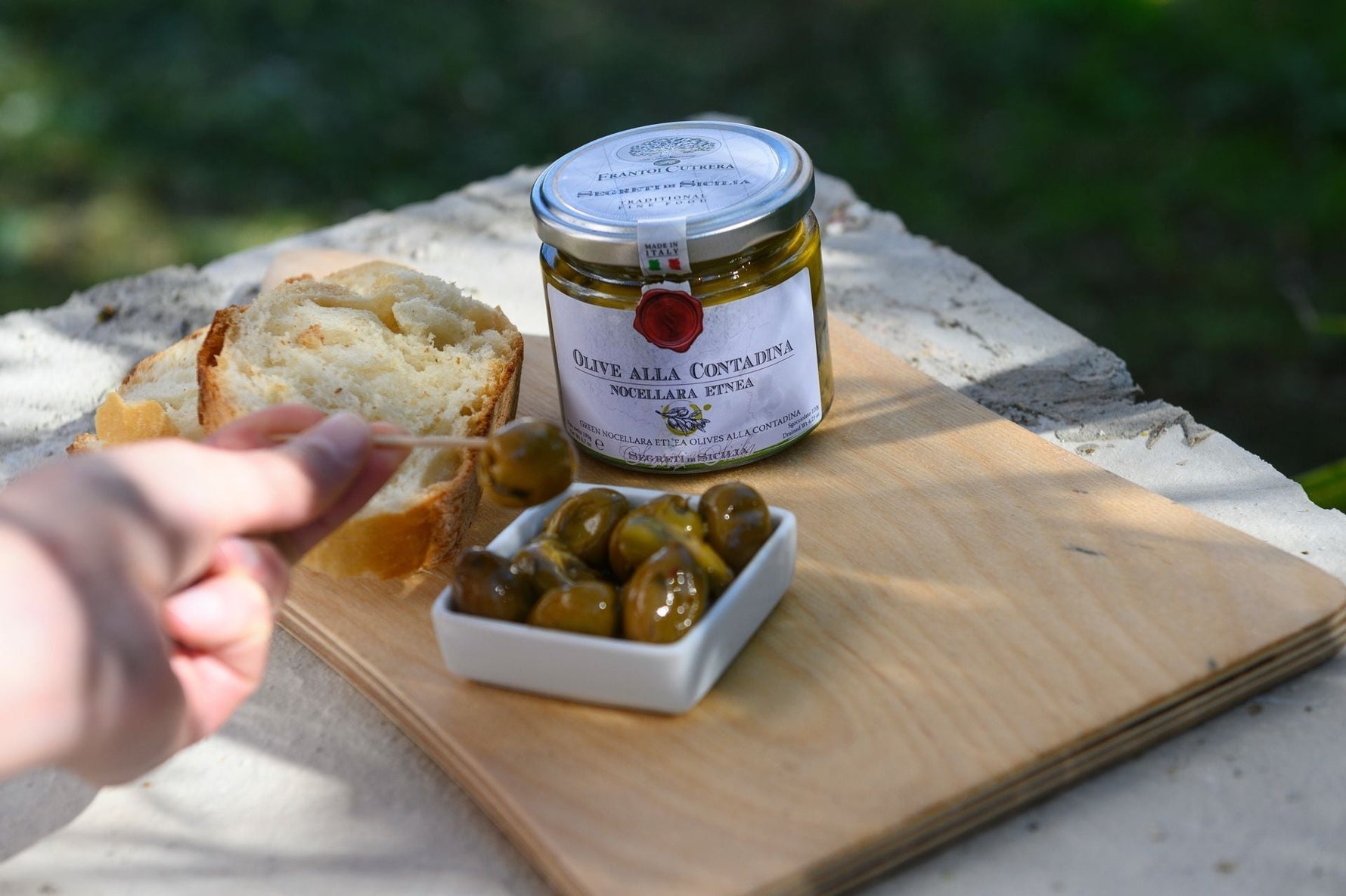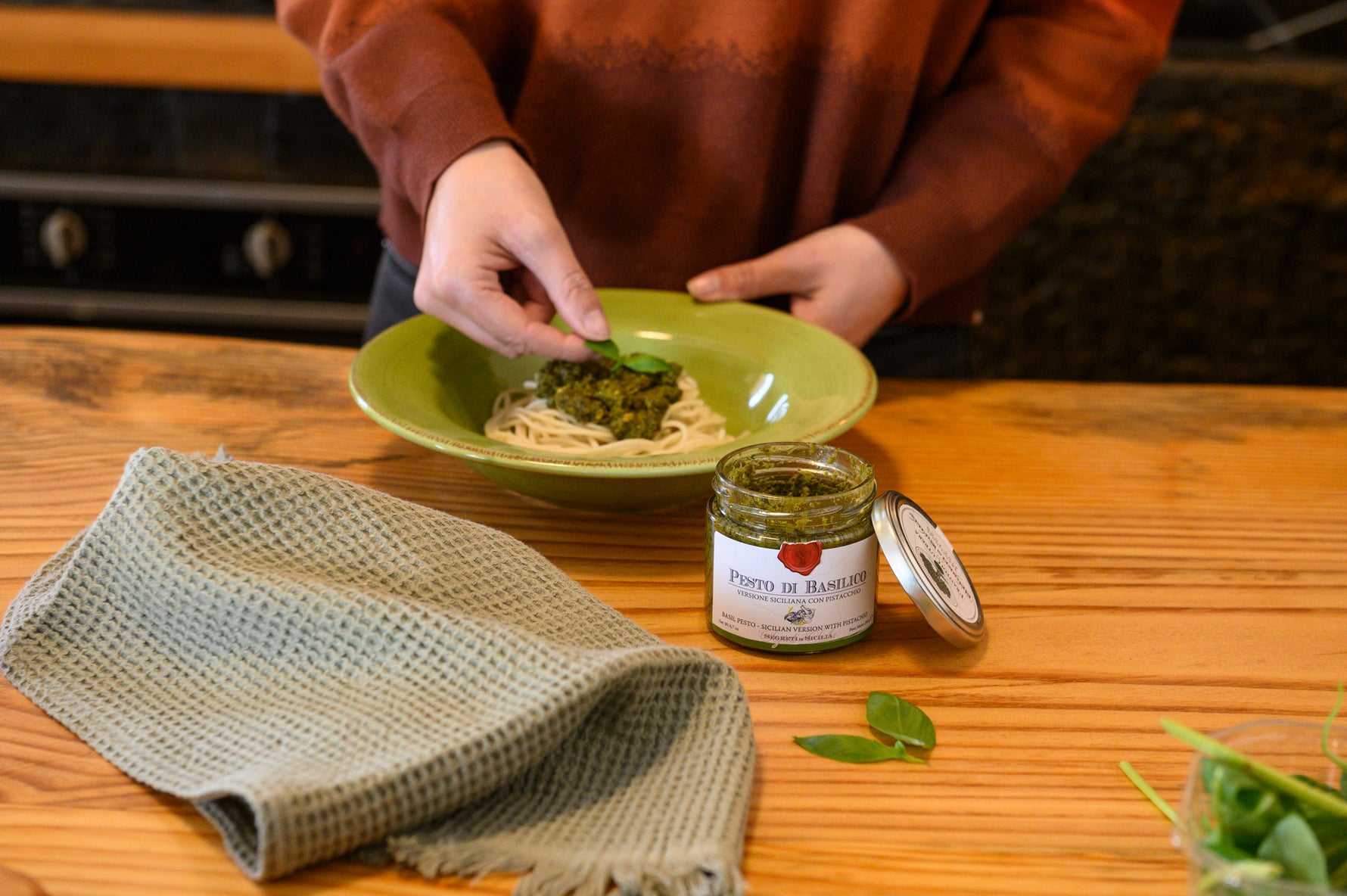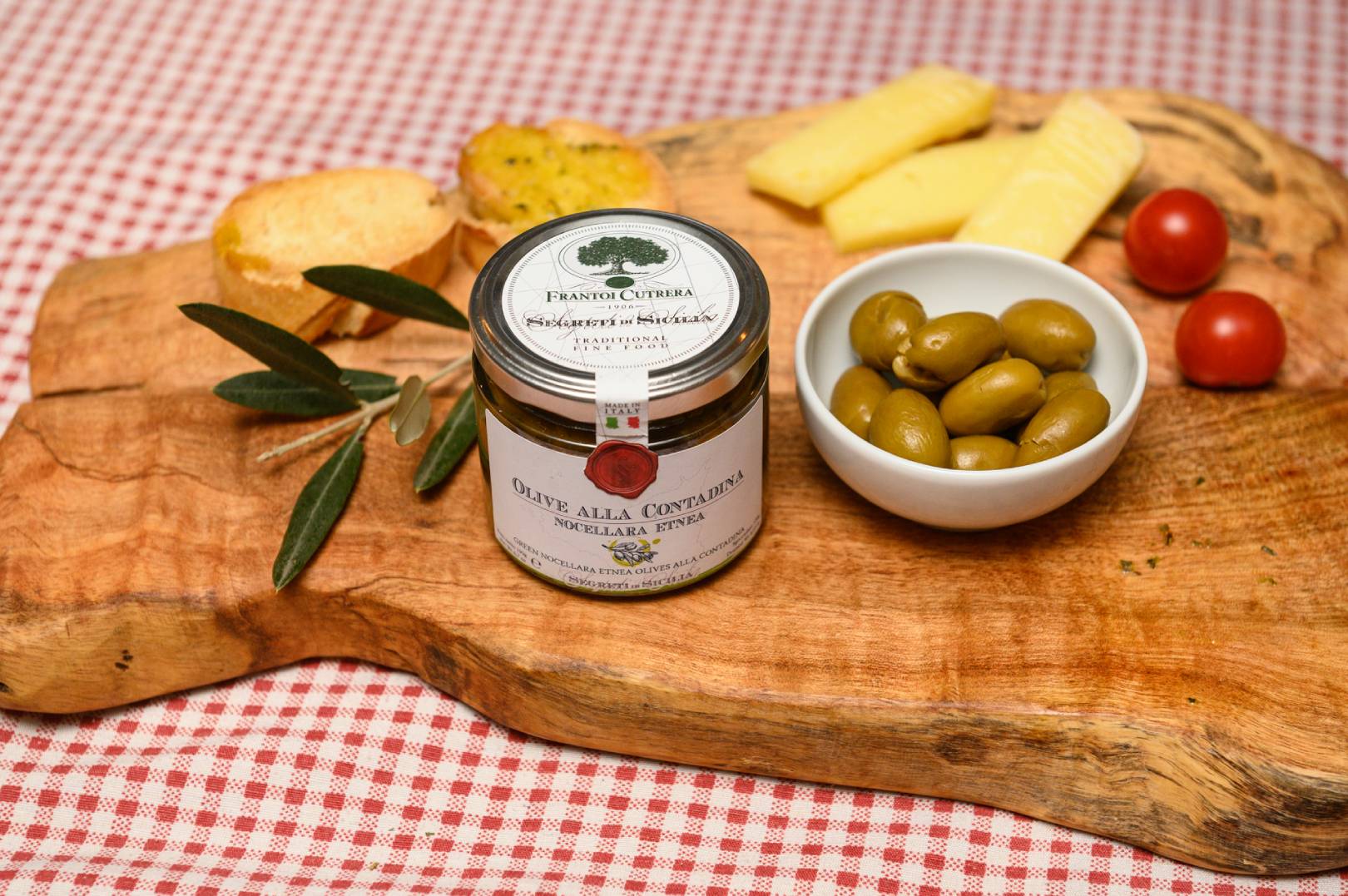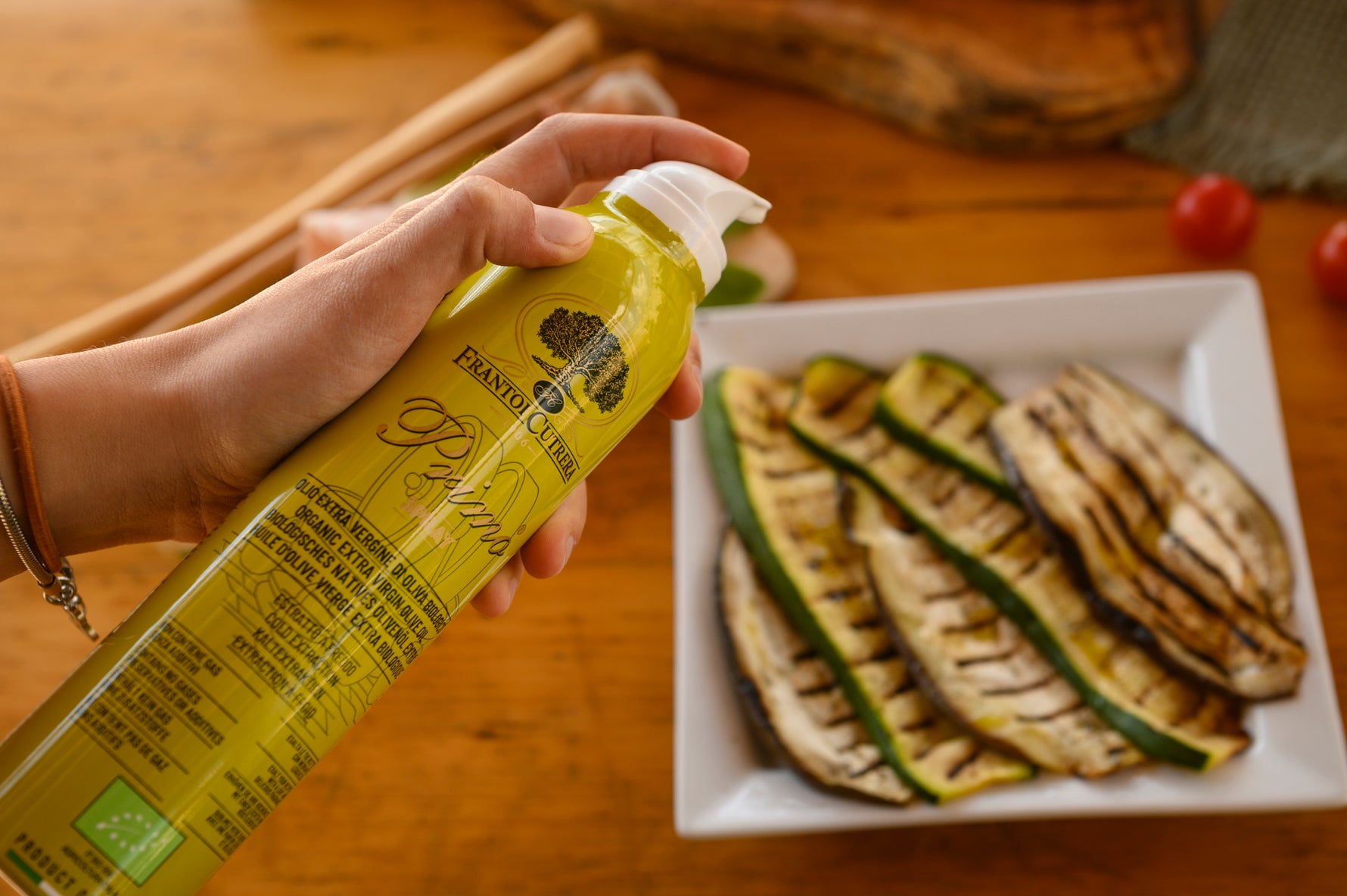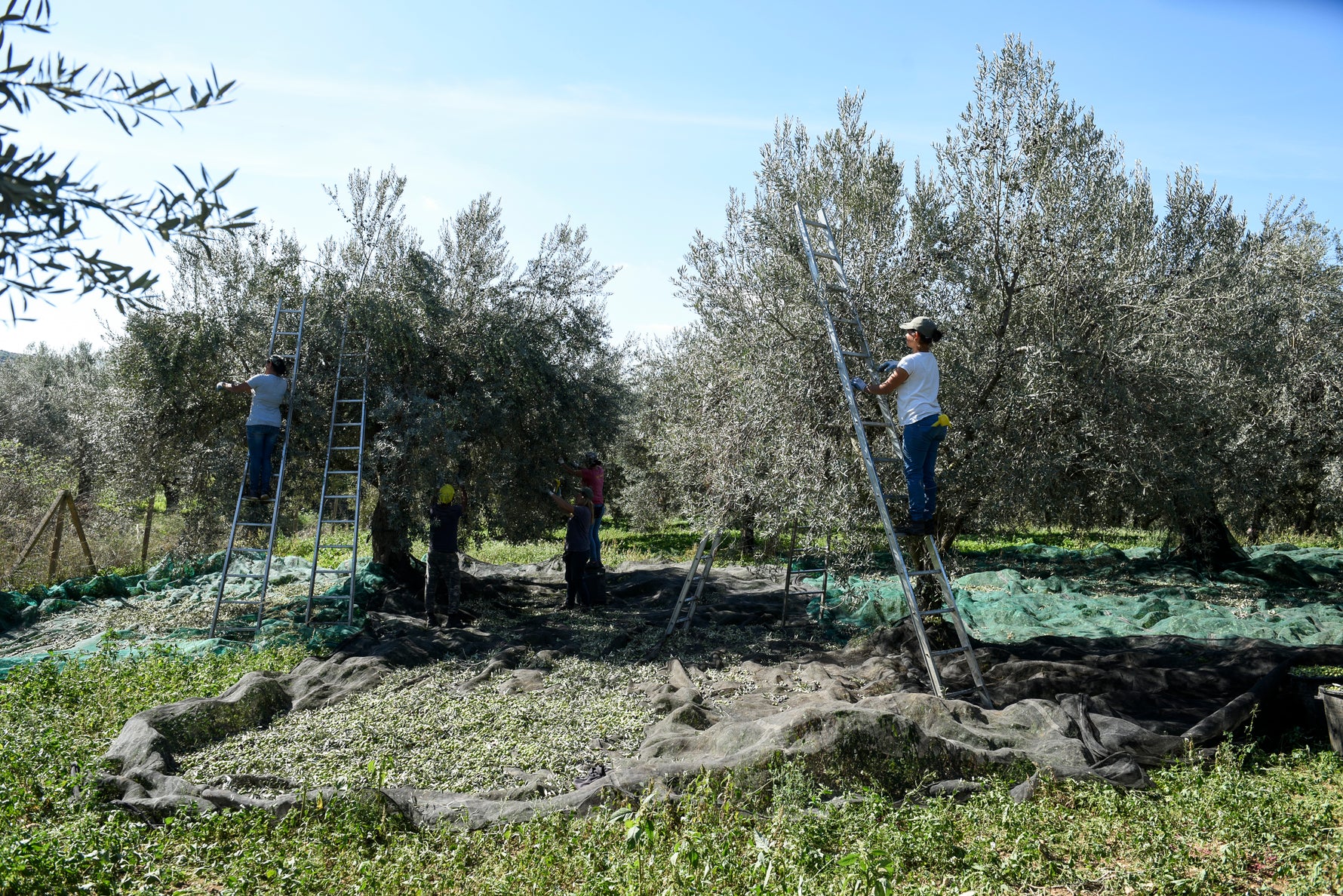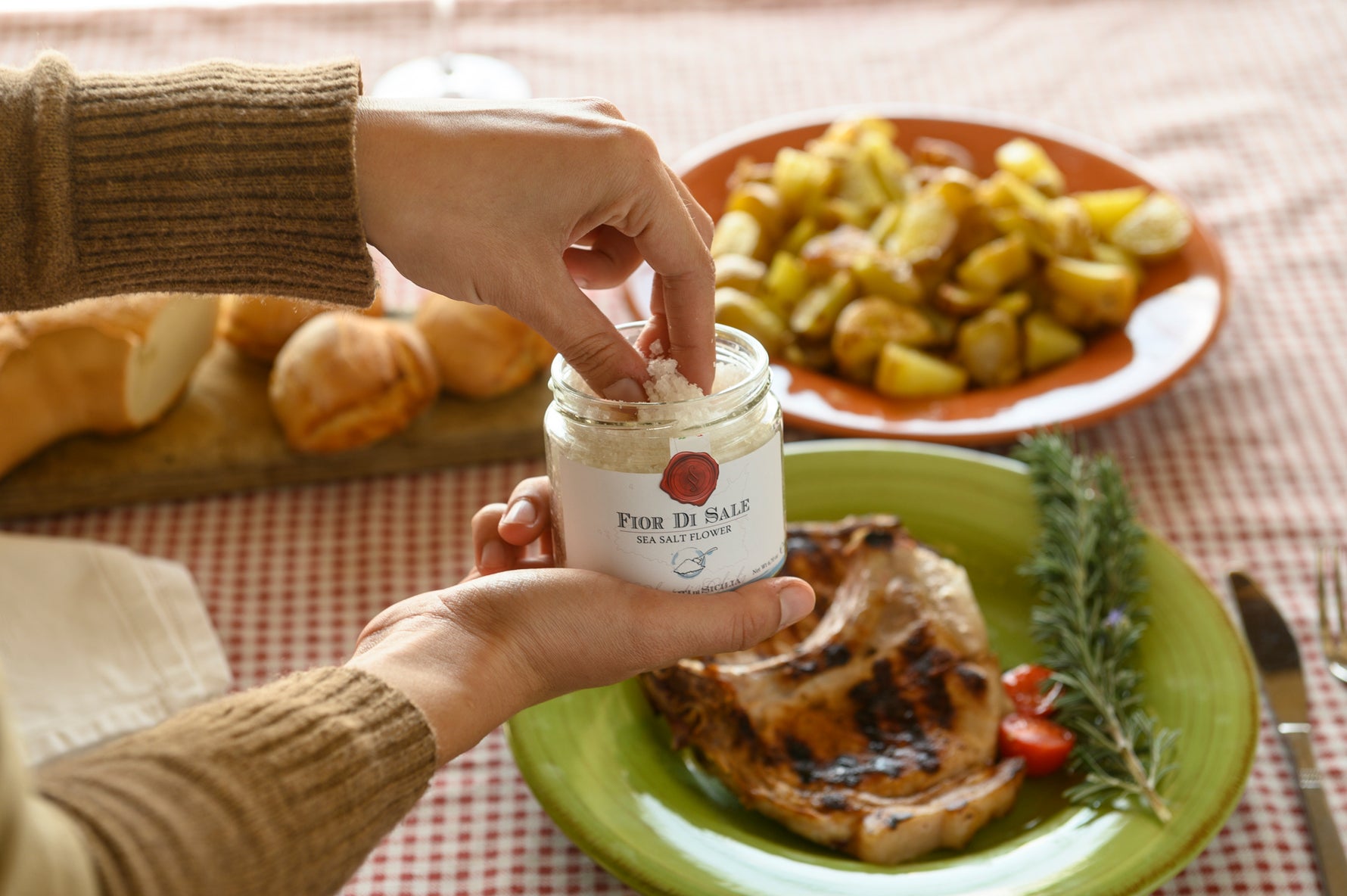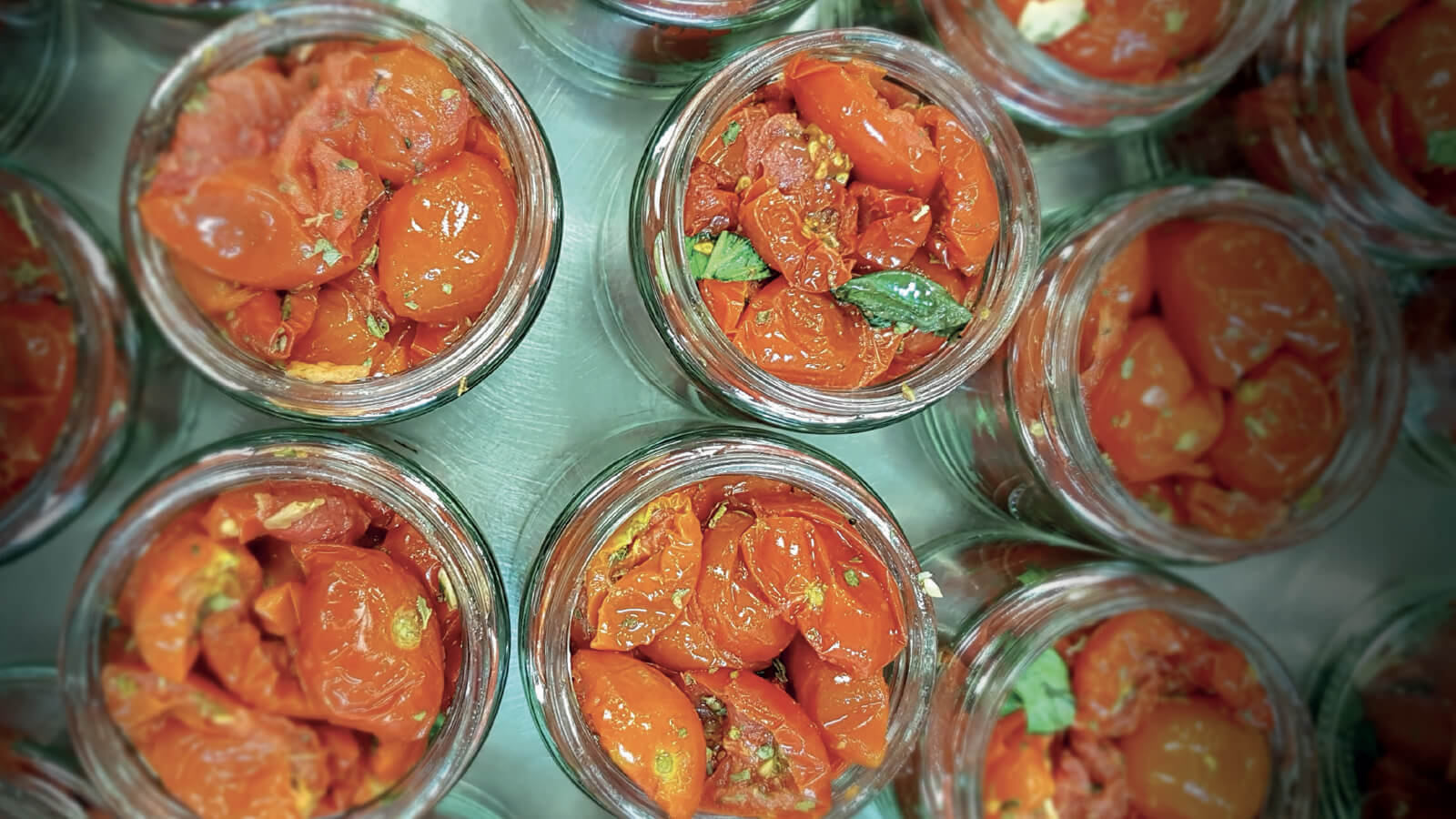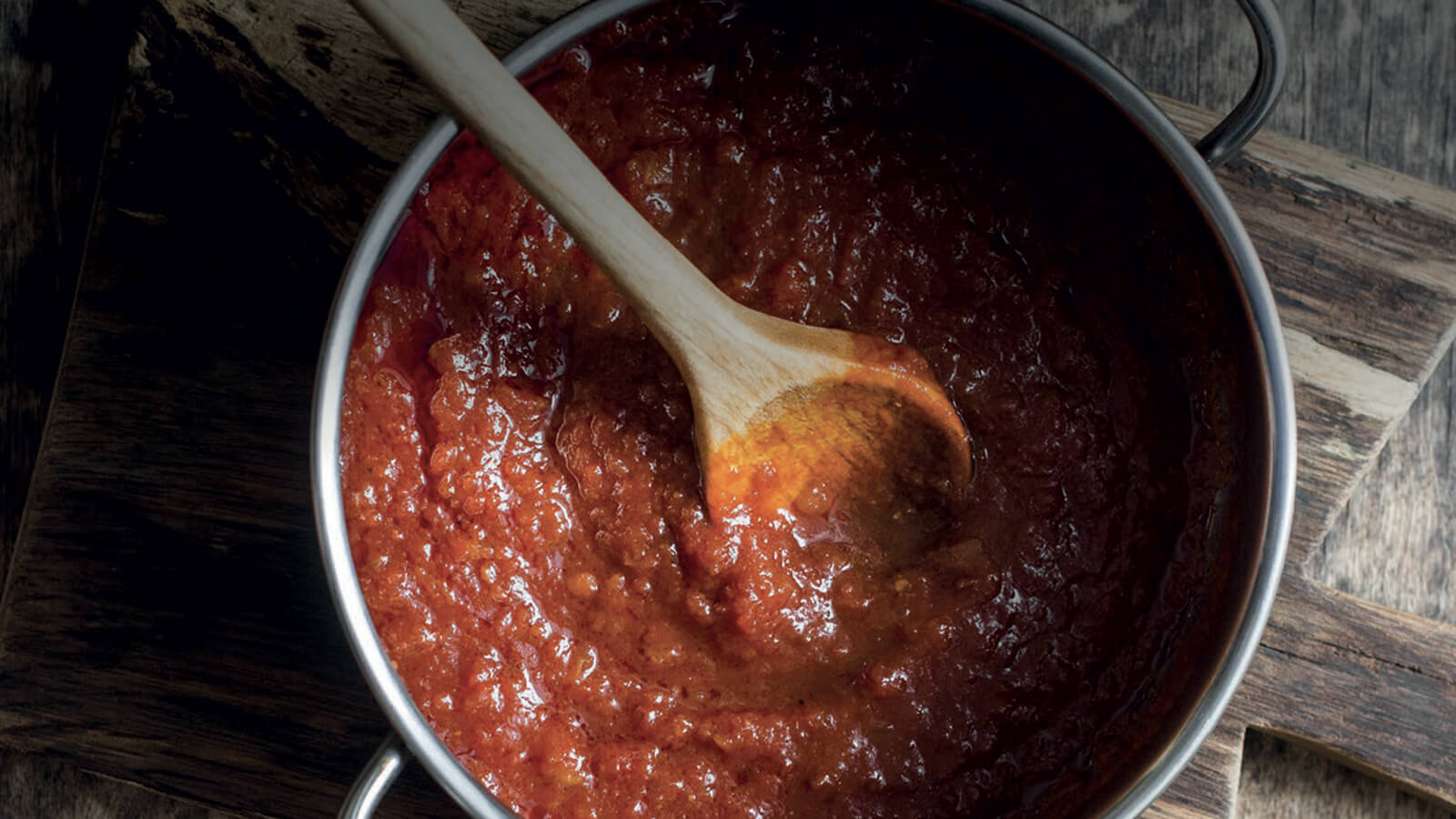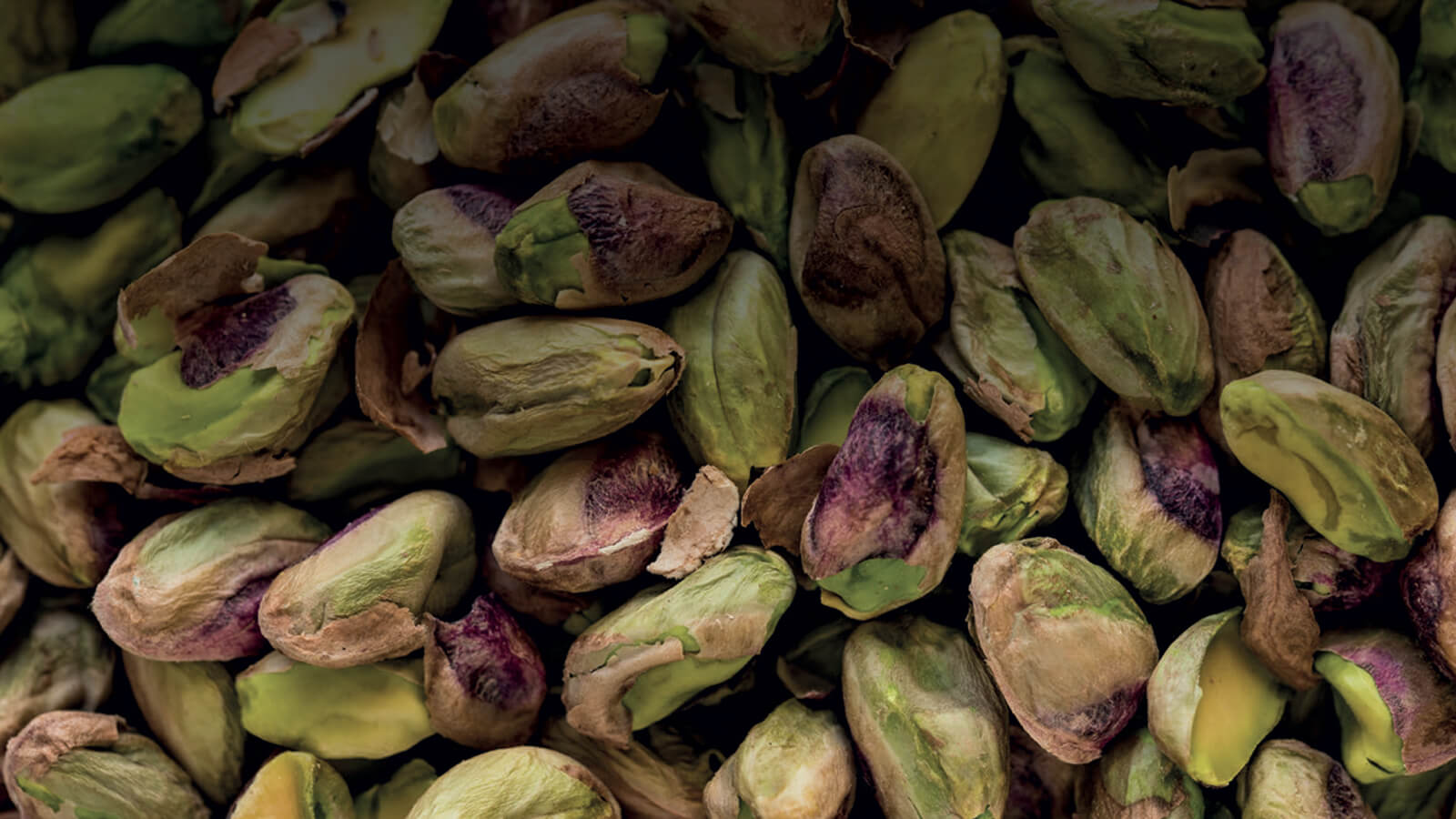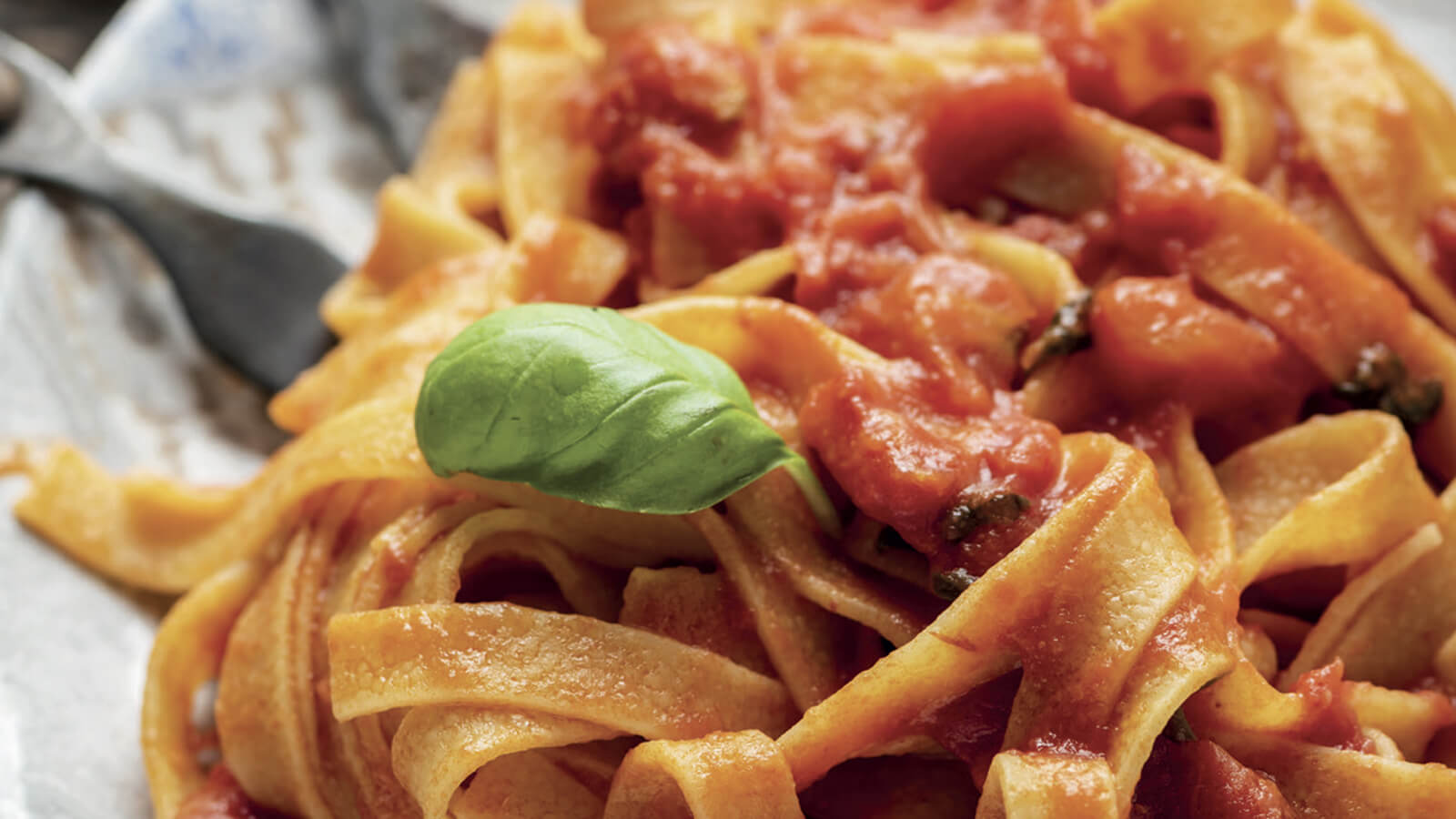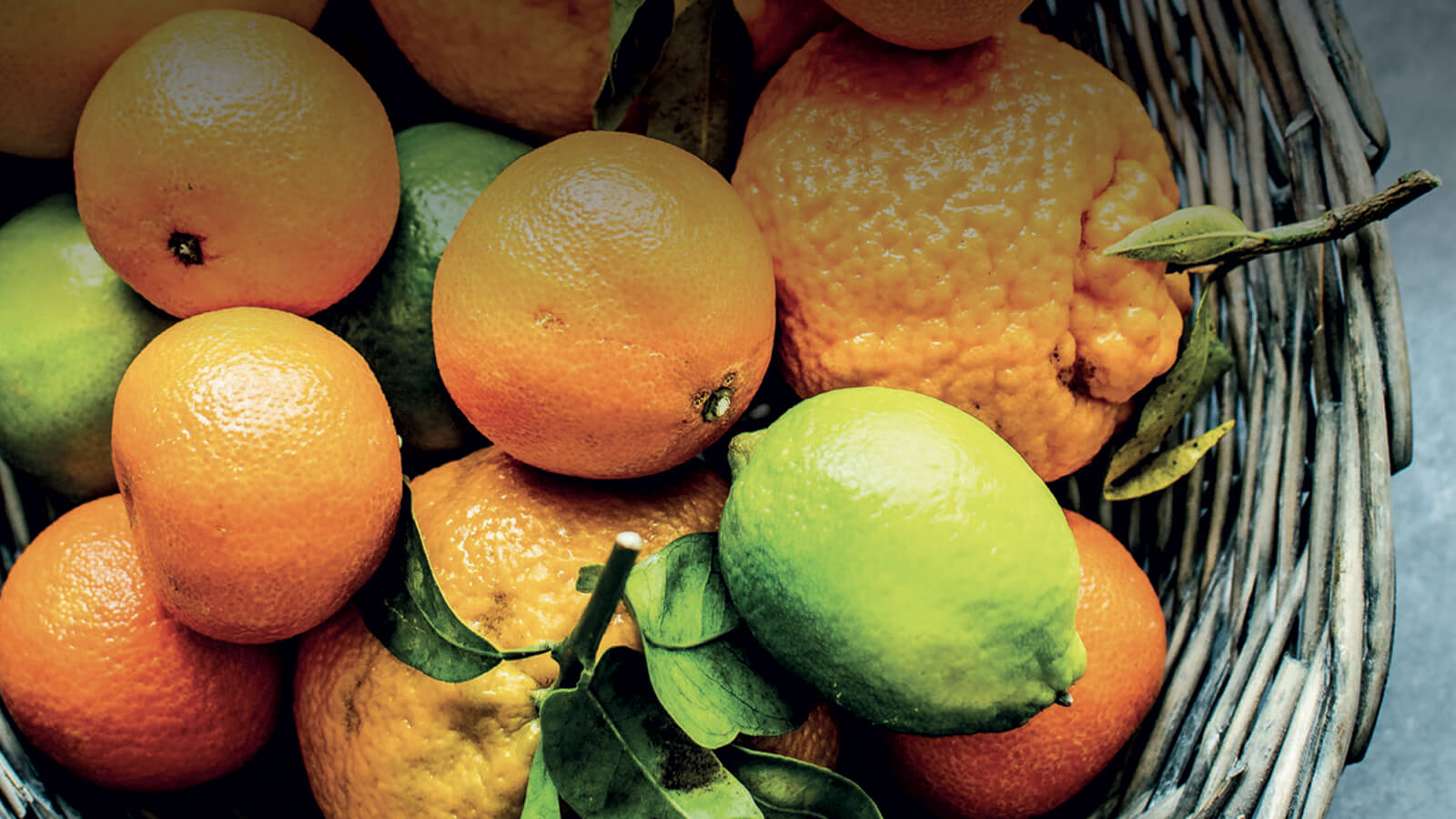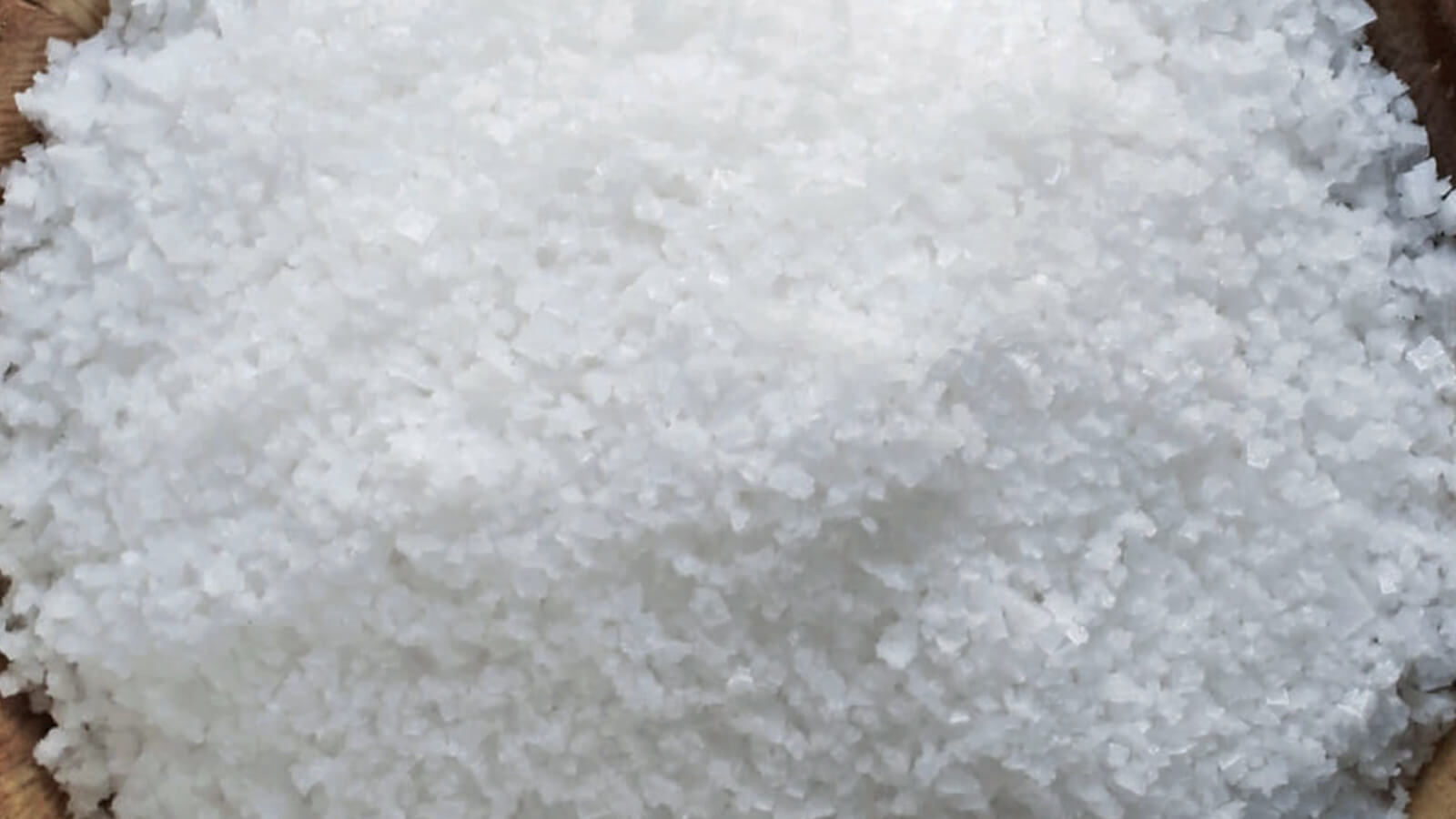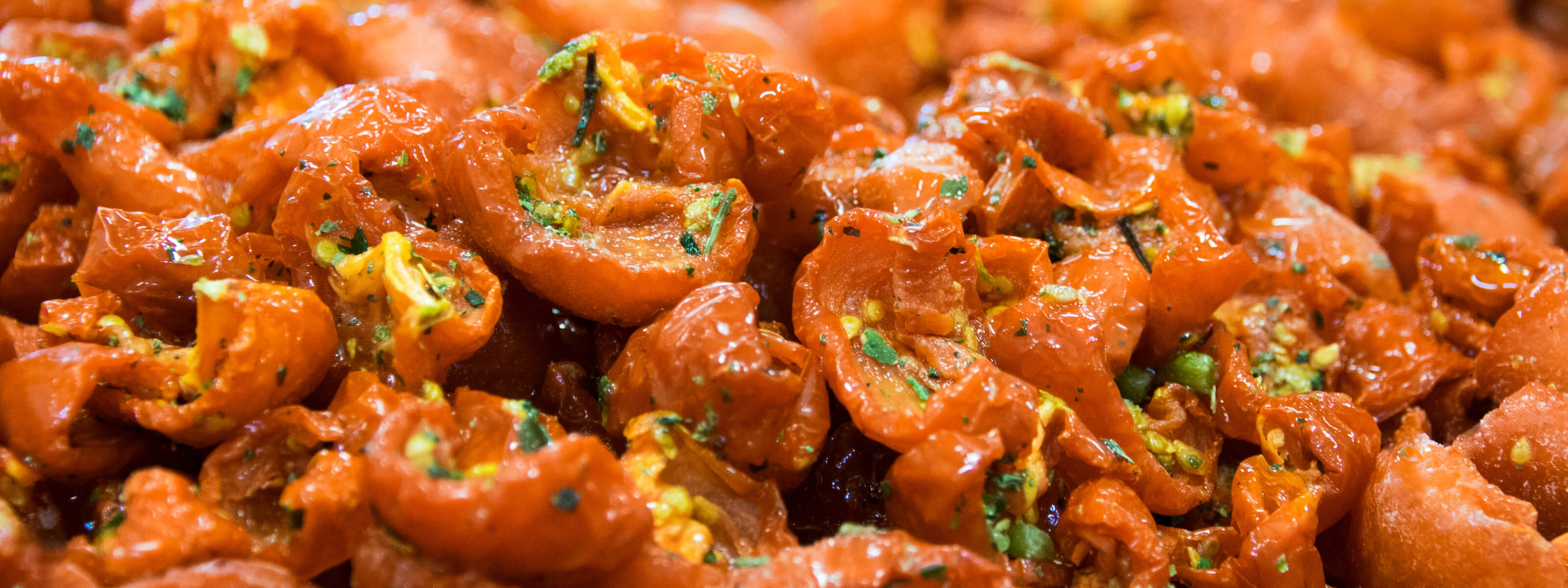Il Fior di Sale: Introduction to White Gold
We have always tried to enhance the genuine flavors of our Mediterranean culinary tradition, and that is why we fell in love with Fior di Sale, often nicknamed the 'white gold' of the kitchen. This salt is not like the others; it is a product of pure elegance, harvested manually with techniques that have been handed down for centuries.
Imagine a quiet afternoon on the Mediterranean coast. The waters are calm, the sun is setting on the horizon, painting the sky with shades of orange and pink. This is the moment that the salt workers await: the beginning of the harvest of the Fior di Sale. It forms on the surface of the evaporation tanks of the salt pans as a thin layer of crystals that are delicately collected with nets, ensuring that its quality is preserved.
It is the first salt to form, gathering in small light flakes that resemble flower petals.
Rich in magnesium and trace elements, its flavour is delicate and melts slowly on the palate.
Its crunchy texture and ability to enhance flavors make it ideal for finishing dishes.
Exploring the history of Fleur de Sel, we discover that it has been valued as a preciousness since the times of the ancient Romans. Today, its use is an authentic gourmet ritual, appreciated by chefs and gourmets around the world. Starting from a deep knowledge of its characteristics, we try to honor this gift of nature, using it with respect to bring its magical touch to our kitchens.
Historical Notes: The Fleur de Sel Over the Centuries
Since ancient times, salt has played a vital role in human civilizations. The "fleur de sel" in particular, considered the elite among sea salts, has a charm that is lost in the mists of time.
Let us remember how the ancient salt pans, already known by the Phoenicians, saw their moments of glory with the Romans, masters in the art of salination. They were the ones who collected that thin layer of crystals that formed on the surface of the water in the salt pans, before it could sink and become common salt. This precious salt, they called "flos salis", was reserved for the upper classes and even used as a currency.
In the Middle Ages, fleur de sel became a luxury item among European nobles. Our ancestors used it not only to flavor dishes but also for its supposed healing properties. Stories are told of sumptuous banquets where fleur de sel was presented in gold-inlaid bowls.
Let's jump to the Renaissance, when fleur de sel began to be traded on increasingly wider routes, even arriving in the kitchens of the newly discovered worlds. The nobility of the time appreciated this delicacy for its purity and its ability to enhance flavors without overpowering them.
Today, we reflect on its centuries-old history and the traditional technique that has been handed down unchanged: sea water is channeled into shallow tanks and, under the sun, the humidity evaporates, giving us those precious crystals as light as snow, which we still collect today with ancient gestures, custodians of a priceless legacy.
How the Fleur de Sel is Born
Imagine a hot summer day bordered by the sea sparkling under the sun. As we walk along the salty shores of the salt flats, we perceive the distinct scent of the sea mixing with warm mineral notes. This is where the journey of the fleur de sel begins.
The process of extracting fleur de sel is delicately artisanal and deeply tied to the rhythms of nature. Coming from the salt waters of lagoons or coastal salt marshes, the creation of this precious spice occurs when particular conditions come together in perfect balance.
Natural evaporation: Thanks to the combined action of sun and wind, the water begins to evaporate naturally, increasing the concentration of salinity. This is a delicate moment in which we patiently observe nature at work.
Crystal formation: As salinity increases, fine crystals form on the surface. These small, delicate crystals are the heart of fleur de sel.
Manual Harvest: Equipped with traditional tools, such as wooden brooms and thin nets, we carefully approach the harvest. With light and precise movements, we skim the surface of the water, capturing only the fleur de sel that hovers like a thin iridescent film.
Harvesting must be done with extreme care to preserve the fragile structure of these crystals. It is a practice that requires time and dedication, often in hot and demanding conditions, but the result is a salt so rare and valuable that every step of the process is felt as a small triumph.
After harvesting, the fleur de sel is left to dry in the open air, often on wooden boards or in special greenhouses, until it reaches the perfect consistency that makes it so loved by chefs and gourmets around the world.
In these moments, we realize that more than an activity, the production of fleur de sel is an art form - a silent dialogue between man and sea, in which each grain tells a story that is lost on the horizon.
Unique Features: Why is Fleur de Sel So Precious?
Let's dive into the story of a salt that makes the hearts of chefs and connoisseurs around the world beat. Fior di Sale , the gem of the salt pan, is born from the mildest atmospheric conditions and from an ancient savoir-faire that expert hands know how to capture at the most opportune moment.
Artisanal Harvest : Nature dictates the pace of our journey in the production of Fior di Sale. Only on the sunniest and breeziest days, when the surface of the salt flats offers these precious crystals, do we take action. With delicate and precise gestures, like painters with their canvas, we collect these delicate flakes by hand, guaranteeing unparalleled quality.
Pure and Rich in Minerals : As the breeze caresses our faces, we can’t help but admire the purity of this white gold. It contains more minerals than common salt, including magnesium, calcium, and iron, in a symphony of elements that enrich each dish with a more refined and complex flavor.
Unique Texture : In our tastings, the texture of the Fior di Sale always captivates the senses. Those light and crunchy crystals melt gently on the palate, enhancing the flavors without overpowering them. It is a tactile surprise to experience in every bite.
Its rarity is a chapter in itself. The production of Fior di Sale is limited, and this very scarcity makes it such a desired good. Through a centuries-old process that respects natural cycles and long times, we take care of nature's treasures that reach the most exclusive tables.
Fior di Sale is not simply a condiment. It is a sensory experience, a bridge between land and sea, a finishing touch that transforms dishes into works of art. We are the artisans of this white gold, custodians of a legacy that encompasses the history, culture and passion of Mediterranean cuisine.
Differences between Fleur de Sel and Other Types of Salt
Ah, fleur de sel, that precious gift from the sea that is so delicate and pure. In our kitchens, it sits on the throne of king of salts, but what, in truth, distinguishes it from the other members of its saline family? We will now tell you the story that weaves together these differences.
First of all, its birth is a miracle of nature: fleur de sel is collected from the surface of the salt flats with artisanal and manual methods, because only in this way is its fragrant and delicate structure preserved. Imagine the expert hands of the harvester that slide lightly on the crust of crystals, almost as if not wanting to disturb the sleep of those young jewels.
Meanwhile, other types of salt, such as common table salt or whole sea salt, are extracted with more industrial methods. There are large machines weighed down by work that mark the rhythm in those salt mines, where salt is simply a mineral to be extracted, without much regard for refinement.
Our fleur de sel, rich in minerals, does not know the heavy hand of industrialization. It impertinently maintains its natural humidity and draws a clear line of quality. It is the least treated and therefore most natural of its cousins, leaving us with an aftertaste of pure sea and wind, almost like a whisper of the ocean on the tongue.
On the other hand, table salt is often refined and iodized, with uniform grains that remain inert to the passion of taste. And coarse salt? Ah, it is a good worker for cooking, but without that light and tasty soul that only fleur de sel can boast.
So, when we weigh the finishing touches on our dishes, we choose salt as a painter chooses his color: with intention and reverence. And fleur de sel is our brightest color.
Health Benefits: Nutritional Value of Fleur de Sel
On our journey through the treasures of Mediterranean cuisine, we come across a true gem: fleur de sel. Like a golden thread in the culinary fabric, this unique salt is not only a masterpiece of taste, but also a treasure trove of health benefits.
Rich in minerals and trace elements: Unlike refined salt, fleur de sel retains its rich content of minerals such as magnesium, calcium and potassium, all essential for the proper functioning of our body.
Low Sodium: Due to its delicate crystalline structure, fleur de sel has a more intense flavour, which means we can use less of it than common salt. In this way, we help our body maintain a healthy water balance by reducing sodium intake.
Hydration and Electrolyte Balance: The balance of minerals found in fleur de sel can support hydration and help balance electrolytes, especially after exercise or in hot climates.
We can almost imagine the waters of the Mediterranean dancing under the sun while the craftsman, with wise and careful gestures, collects that very thin crystalline crust that is the fleur de sel. It is an act of love towards tradition and health, a small gesture that brings tangible benefits to the dishes we will taste.
"It is not simple salt, but the signature of the ocean on our table, a brushstroke of nature in every bite."
And let's remember, when it comes to fleur de sel, less is more. This is not just a mantra for seasoning, but also for our well-being. With its distinctive flavor and superior quality, it invites us to reconsider the use of salt, for a healthier life and an ennoble culinary experience.
Tips for Using Fleur de Sel in the Kitchen
We lovers of Mediterranean cuisine know the secret that can transform a good dish into a work of culinary art: fleur de sel. Whether you want to enhance the flavor of a simple salad or add a touch of class to a gourmet dish, here are some suggestions for making the most of this precious ally in the kitchen:
Use it at the end : Fleur de sel should be added to dishes almost at the end of preparation or directly at the moment of serving. Its particular crunch and its aromatic intensity are more evident if not exposed to long cooking.
Less is more : Given its high flavor, it is recommended to use it sparingly. A small pinch between the fingers can make the difference, so be careful not to overdo it to avoid covering the other flavors of the dish.
Winning combinations : Experiment with simple ingredients like ripe tomatoes, eggs, and fresh fish. Its flavor will enhance the natural notes of these foods without overwhelming them.
Cooking discretion : Don't use it as a general table salt. Fleur de sel is a finishing seasoning, perfect for sprinkling on dark chocolate, candies and desserts to create a surprising sweet-salty contrast.
Storage : To maintain its moisture and unique texture, store the fleur de sel in an airtight container in a cool, dry place. External humidity could compromise its quality, making it compact and less valuable.
Always remember that using fleur de sel is an art that is refined with experience and tasting. Listen to your dishes and let your palate guide you in the perfect dosage. With a pinch of creativity and a grain of fleur de sel, every meal can become a journey into the heart of the Mediterranean.
Refined Recipes Using Fleur de Sel
When we approach the preparation of dishes that require that extra touch of elegance, we opt for the use of fleur de sel, that crystalline beauty that is collected manually in the sea salt pans. Its ability to enhance subtle and complex flavors without overpowering them allows us to create truly memorable dishes.
Ideas for making the best use of fleur de sel in the kitchen:
Sea Bass Fillet Al Cartoccio : Lightly sprinkle the fish with fleur de sel before baking. The delicacy of this salt will highlight the freshness of the sea bass, while its crystals will melt delicately, spreading a balanced flavor.
Beef Carpaccio : A classic Italian appetizer. After placing thin slices of raw meat on a plate, season them with a drizzle of extra virgin olive oil, a pinch of black pepper, and finish with a light touch of fleur de sel. This will give a flavor nuance without comparison.
Homemade Chocolates : For those who love bold contrasts, fleur de sel can provide a unique experience when sprinkled on dark chocolates. The mix of sweet chocolate and salty notes will be a real delight for the palate.
Cherry Tomato and Burrata Salad : Dress this simple salad with a drizzle of excellent olive oil and a few fleur de sel crystals. The result will be a dish that celebrates the simplicity of the ingredients, where the salt enhances the sweetness of the cherry tomatoes and the creaminess of the burrata.
Remember, fleur de sel should always be added raw, as a finishing touch, so as not to lose its qualities. The magic happens when you touch the plate with that thin layer of crystals, a simple gesture that expresses the essence of our passion for fine cuisine.
How to Best Preserve Fleur de Sel
In our culinary journey through the authentic flavors of the Mediterranean area, we often come across that white and crystalline treasure known as fleur de sel. Collecting it is an art, but preserving it is an act of dedication that allows us to keep its purity and exquisite taste intact.
To ensure its freshness, we follow some fundamental steps. First of all, it is essential to choose the right container: we prefer a glass jar with an airtight seal. Glass not only protects the salt from humidity, but also preserves its natural aromas without altering them.
One thing we cannot overlook is the placement of our precious container. We know that direct exposure to sunlight or heat sources can compromise its quality. So, let's find a cool, dry corner of our kitchen, away from stoves and windows, to ensure it has a safe shelter.
Make sure your hands are dry when removing the fleur de sel, to avoid adding moisture to the container.
Use clean, dry utensils, such as spoons or spatulas, to scoop out the salt without contaminating it.
After each use, we carefully place the jar back in its protected corner, making sure that the seal is perfect.
We consider fleur de sel a small daily luxury, a faithful companion in our gastronomic adventures; and with these simple gestures of care, we ensure that each crystal tells the story of the sea and the sun that created it. With the right attention, fleur de sel remains an irreplaceable ally in a timeless journey through the pleasures of Mediterranean cuisine.
Buying Fleur de Sel: Selection Criteria and Advice
When we venture out in search of the prized Fior di Sale, we become true explorers of taste. Imagine walking along the shelves, eyes sparkling at the sight of the precious packages that promise to transform each dish into a work of culinary art.
First of all, it is essential to consider the origin of the Fior di Sale. Check that it comes from environmentally friendly salt mines, possibly located in regions known for their tradition in the production of sea salt, such as France or Portugal. This is not only a guarantee of quality but also a support for the communities that have cultivated this craft with passion for generations.
We are then attracted by purity. This means that we should look for a product without additives or anti-caking agents, to better savor its crystalline nature and delicate hints of the sea.
Consider the texture: Fior di Sale is famous for its soft crunchiness. A good indicator of quality is its ability to slowly melt on the tongue, releasing its unique flavor in a subtle and elegant way.
Let's not neglect the visual aspect. The Fior di Sale should have a natural color, a bright white or slightly off-white, a sign of natural drying in the sun and wind.
Finally, let's consider the presentation. A package that preserves the integrity and aroma of the salt is essential. Often, the Fior di Sale is presented in elegant glass jars or canvas bags, which suggest a respect for that touch of luxury that characterizes this natural wonder.
Remember, Fior di Sale is more than a condiment; it is a sensory journey that recalls the embrace of the sea and the whisper of the wind in the salt flats. Select it carefully, and each dish will become a narrative of your culinary adventures.
Sustainability and Environmental Impact in the Production of Fior di Sale
As we sit around a rustic wooden table at sunset, with the light breeze caressing our faces, we like to imagine the journey those small sparkling crystals of fleur de sel have made before arriving on our tables. We are increasingly aware of the importance of sustainability and the impact that every daily gesture has on the planet, and choosing fleur de sel as an ally in the kitchen is no exception.
The fleur de sel, harvested in an artisanal way from the salt pans, is a testimony to a tradition that respects the environment and works in harmony with it. Adopting methods that do not involve the use of heavy machinery means reducing CO2 emissions and preserving the integrity of the landscape.
Producers of fleur de sel often follow sustainable practices to preserve the biodiversity of the salt marshes.
Sea water, exposed to the sun and wind, is transformed into salt without the need for further industrial processes, minimizing the use of energy resources.
There is little alteration to the natural site because harvesting fleur de sel requires only simple, manual tools.
The small scale of production ensures that the delicate balance of saline habitats remains unchanged.
The reduced environmental impact is reflected not only in the quality of the product but also in the ethics of consumption that they encourage. Furthermore, fleur de sel is often associated with environmental protection and local development projects, going beyond simple food production to embrace an active role in the conservation of natural beauty and the promotion of a sustainable balance.
When we bring a pinch of this rare salt to the table, we are not only enhancing the taste of our dishes, but we are also supporting a production chain that looks to the future with respect and awareness.
Fleur de Sel in Italian Gastronomic Culture
In the varied Italian gastronomic landscape, fleur de sel is recognized as the finishing touch that enhances the authentic flavors of our traditional recipes. Its use unfolds through a thousand-year history, in which the sea and the land meet to offer a product of inestimable culinary value.
In the Deep South, our chefs adorn freshly caught seafood dishes with this subtle crystallization of flavor.
Moving to the terraces in the shade of the olive trees, we can savor grilled vegetables that, with a pinch of fleur de sel, release surprising aromas.
And who can resist a buffalo mozzarella, so delicate and creamy, which welcomes between its folds a light veil of these salt crystals?
Every gift from our land becomes a work of art when crowned with this precious salt. In starred restaurants as well as in our grandmothers' kitchens, fleur de sel is a sign of a passion for refined taste and for the respect of those slow and careful production methods that have always characterized our way of cooking.
In our local markets, fleur de sel has a place of honor, often presented in elegant packages that emphasize its value. We give it away with pride, as a symbol of Italian culinary excellence capable of crossing borders and conquering the most refined palates.
As lovers of good food, we always enthusiastically invite our guests to discover this jewel of the sea. "Try it," we say as we sprinkle it on a plate, "and you will understand why we in Italy are so proud of our culinary traditions." With every grain of fleur de sel, we celebrate the best of Mediterranean cuisine, and continue to weave the story of a love for excellence that knows no time.
Conclusions: Integrating Fleur de Sel into Your Eating Style
Culinary art is an exciting journey where each ingredient plays its role in the harmony of flavors. Introducing fleur de sel into our food style is like discovering a new color to paint our dishes. We use it sparingly, inviting each grain to tell its story of sea and sun.
We experiment with fleur de sel beyond the boundaries of the ordinary, embracing its character in vivid salads, fresh seafood dishes and artisanal chocolates.
We have learned that the perfect time to add this precious spice is at the last moment, just before serving, so as to preserve its intrinsic moisture and crunch.
We create amazing contrasts, for example by pairing it with sweet ingredients, a magic that never fails to surprise our guests during special occasions.
At first, we were hesitant because of the higher price compared to common salt, however, we saw fleur de sel as an investment in pleasure and well-being, not just as a simple seasoning.
We enjoy sharing this "jewelry" of the kitchen with friends and family, inviting them to discover new flavor nuances together. And so, we find that fleur de sel has become much more than an ingredient: it is a symbol of our love for refined details, a bridge between tradition and culinary innovation. Fleur de sel is our signature on every dish, a witness to a conscious choice towards elevating the experience at the table.

